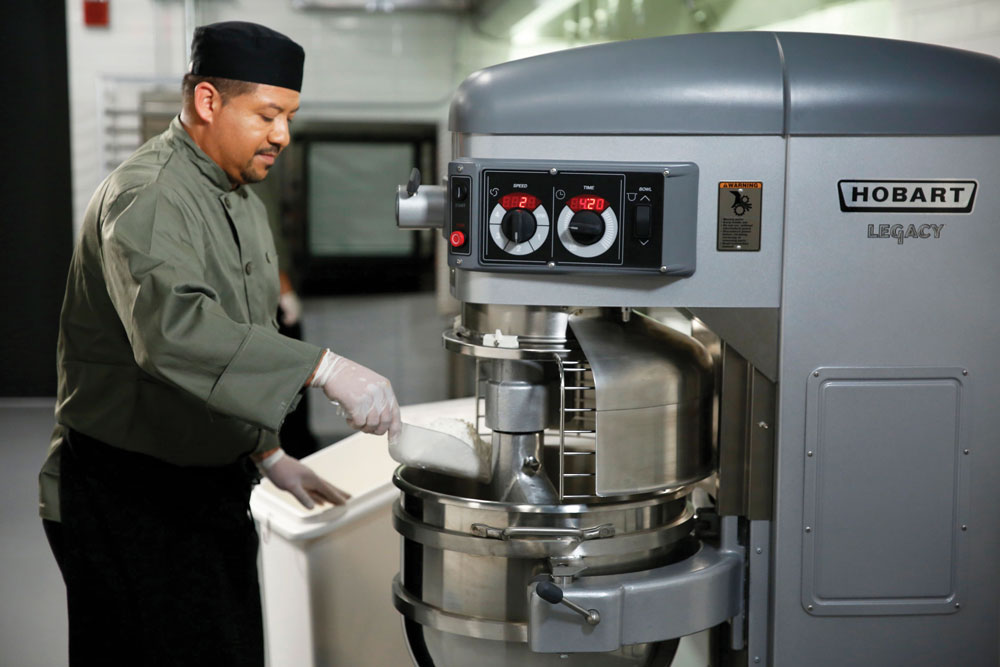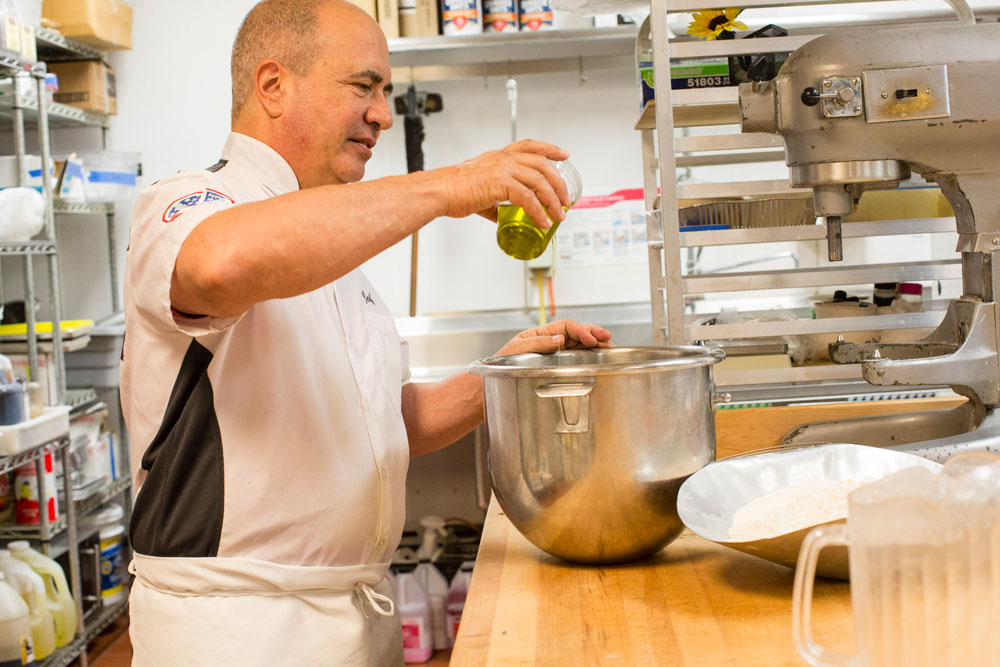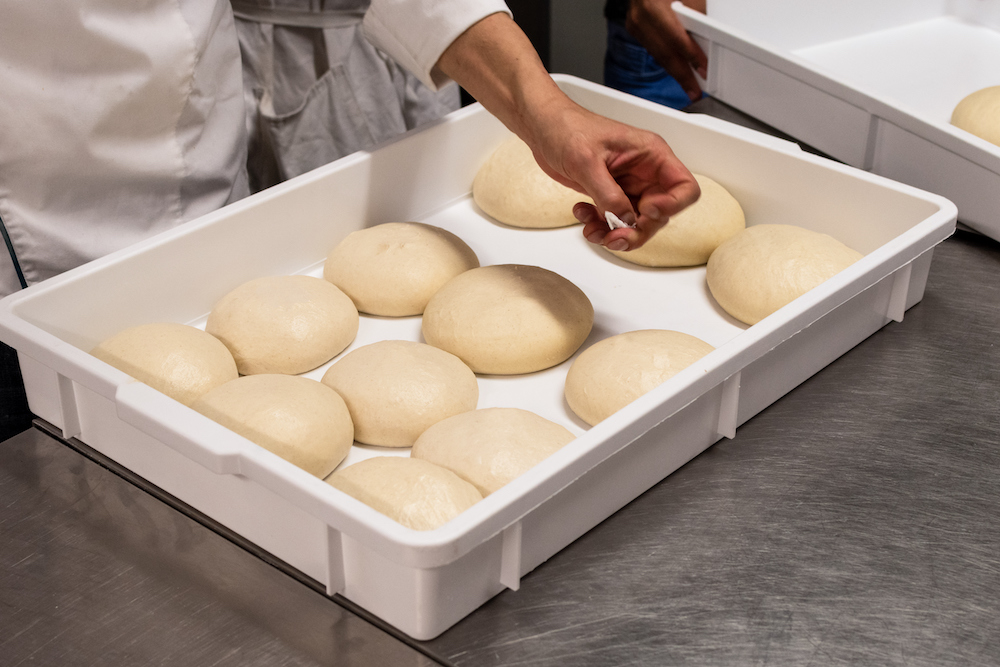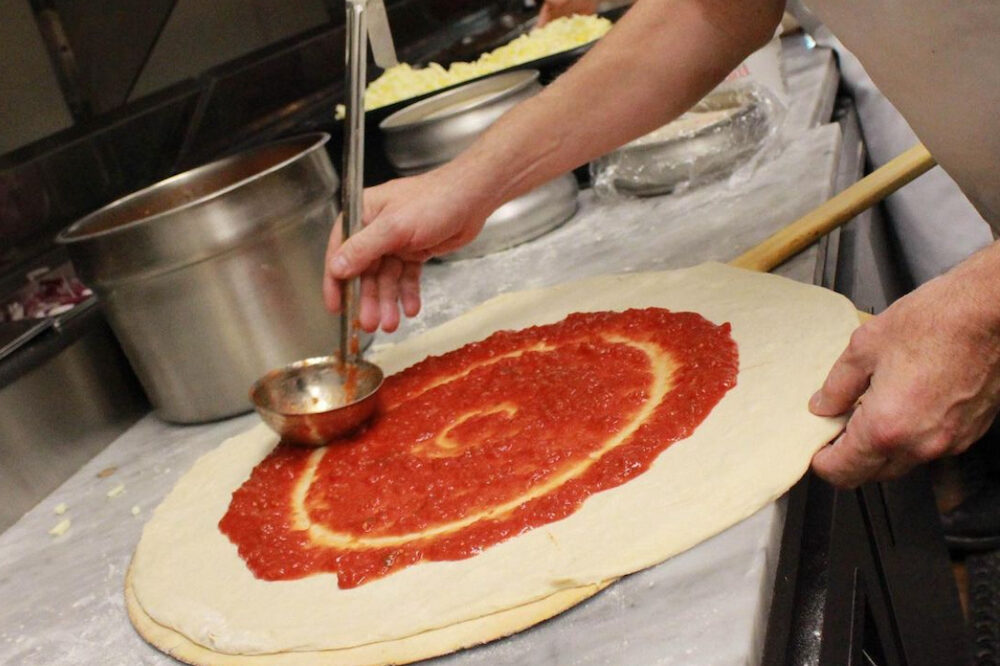- Ready to invest in a new dough mixer? You’ve got plenty of options to choose from.
- From planetary and spiral mixers to VCMs, these industry experts offer tips on how to choose the right one.
A mixer is a major investment for any pizzeria—a heavy lifter that can thrive for decades and make or break your dough (and, potentially, other menu items). As such, choosing the right type, as well as maintaining it for maximum longevity, are key considerations for pizzeria operators. From planetary and spiral varieties to vertical cutter mixers (VCMs), we tapped experts to offer helpful hints on getting the most out of this vital piece of equipment.
Sizing It Up
Carolyn Bilger, Senior Marketing Manager
Hobart, Troy, OH
The most important questions when purchasing a commercial mixer: What’s the application? What are you planning to mix? How many hours per day are you open, and how much time is needed for food preparation? Understand your dough’s absorption rate, because that constitutes the capacity; every mixer has a capacity chart to tell you if you need a 40-, 60- or 140-quart bowl, for example.
To find the absorption rate, divide your flour weight by your water weight. With 25 lb. of water and 50 lb. of flour, that’s a 50% absorption rate. We find it’s our customers’ biggest challenge—they may get a mixer into the operation and realize it’s not large enough for the batch, so they need to cut the batch and increase labor, or they might have continuous maintenance issues because they’re overworking the machine. The majority of maintenance issues arise from those who don’t buy the right machine for their application, which creates havoc. When you overtax the machine, you wear out your gears faster and limit the life of your equipment.
Also, plan for growth. Some pick what they need right now, without thinking of how the business might expand. Have an idea of your future plans, too! Finally, keep your machine clean; wipe it down at the end of the day, wash your bowl and agitators, and allow them to dry properly. Every manufacturer provides cleaning instructions, so follow those guidelines. You can also ask about basic warranties, factory-trained service, extended warranty packages, or preventative maintenance programs.
Type Casting
Tom “The Dough Doctor” Lehmann
The Dough Doctor Consulting, Manhattan, KS
The lower the absorption, the more difficult the dough becomes to mix. As a result, you have to downsize your dough accordingly. If you want longevity from your planetary mixer, don’t overload or overstress it. If in doubt, talk to the manufacturer about the absorption and type of dough—bread, pizza, pastry, etc.—and ask for a recommendation for how much flour should be used for that size bowl. All 60-quart mixers, for example, are not created the same; they have different capacities and vary by model and age. If you’re tripping out your thermal overloads, you need to immediately reduce the size of your dough.
When planning for growth, note that spiral mixers can mix doughs as small as 25% maximum capacity or as big as 115% or 120% —which I don’t recommend! A spiral mixer pulls and twists the dough, giving it more of a kneading action. Many say it aligns the gluten strands in a better fashion. The bowl is much larger in diameter than a planetary bowl, and the longevity of spirals has an excellent track record.
The planetary type is a jack-of-all-trades mixer. Most come with attachment hubs to grind cheese or cut vegetables, for example. A spiral doesn’t have attachments; it does one thing—mix dough—but it does that job very well. Vertical cutter mixers (VCMs) can mix a dough very fast, in seconds, and have two types of mixing attachments. The dull one can be used for making dough, the sharp for dicing cheese. With VCMs, however, it’s important to monitor your mixing times and finished dough temperatures.
Maintenance-wise, mixers are often neglected on the bowl lift—such as when they’re not cleaned or lightly lubricated. I don’t like to use oil, because a baking operation is a very dusty environment, and the mixture of oil and flour can gum everything up. Graphite or silicone is a much better lubricant. Do this about once per year.
Perfect Partnerships
Evan Priesel, Sales & Marketing Manager
Univex Corp., Salem, NH
There is a range of fixed-bowl, removable and overturnable spiral mixers—important for pizza dough. Planetary mixers have more versatility; you can attach a batter beater or wire whip, and you pay more for those options. For planetary mixers, find a bowl scraper (standard or as an option to add on); they’re useful, because anything that goes to the edge gets scooped in and added to the mix. There are also safety features to consider: When the safety cage gets opened, the machine won’t operate. You can also find a model to switch speeds on the fly, so you don’t have to turn off the machine.
When making dough in a planetary mixer, use the first or second speed so you don’t overwork the mixer. For spirals, make sure you clean the machine daily or after your daily batch for sanitary purposes. Scrape off the excess dough on the bowl (for a fixed bowl) or put it in the sink to wash (for a detachable bowl).
Make sure you’re mixing the right amount of dough. Mixers can make all your dough in one batch, but with proofing time and dough processing, that approach may not be the best fit; you might want to make three smaller batches throughout the day.
Before buying a new mixer, work with your manufacturer or dealer to do a trial. Ask about the warranty and if they have an authorized service company that’s near you, so you won’t be down long if something goes wrong. Ask as many questions as possible. Utilize the knowledge that mixer companies have in the factory, from absorption rates to proofing time, so you get the right mixer (and size) for your needs. Understand your batch size, and make sure the manufacturer understands your post-mix procedures.
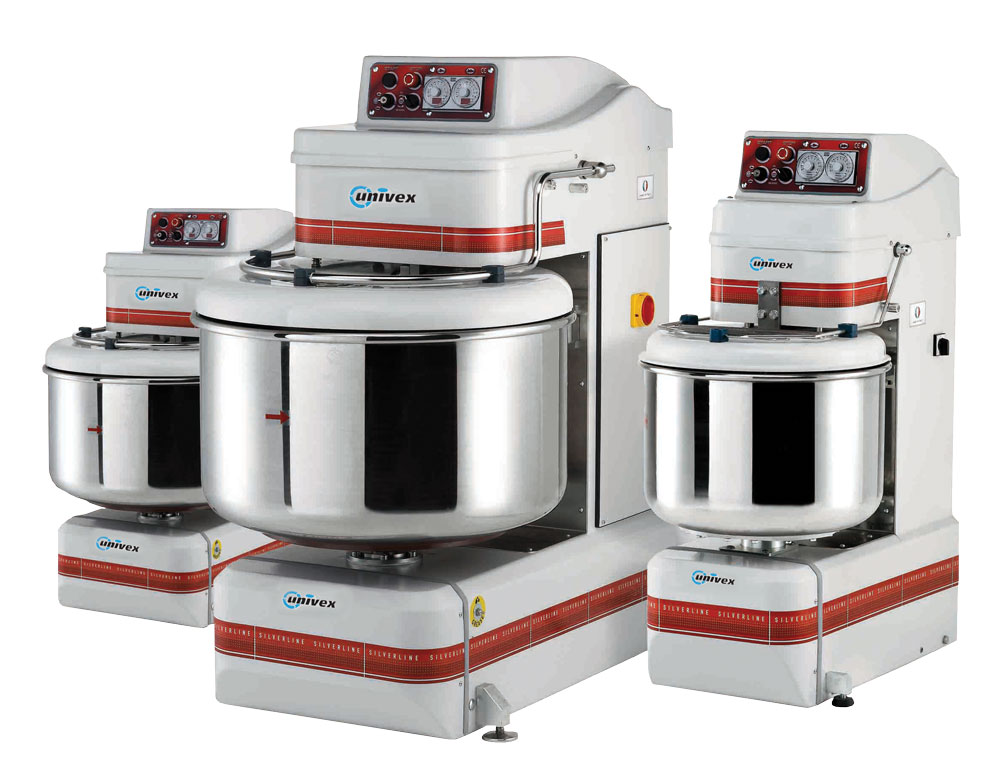
Need for Speed: The VCM
Kevin Keith, National Project Manager,
Robot Coupe USA, Ridgeland, MS
A VCM has multiple applications, handling all of the basics in a pizzeria. You can make dough for breadsticks or pizza; make your own red or white sauces or salad dressings; or pelletize cheese. With a VCM, be willing to experiment with your mixer’s applications.
VCMs have higher rpms, so you activate the yeast by generating heat in the mix. Instead of eight to 12 minutes of mixing time, you can do it in 45 seconds. Tilting arms can be helpful on VCMs, since you might have a 45-lb. dough ball and don’t want to lift that out of a machine. Instead, you can tilt the bowl to remove the dough ball. Digital timers also help users, since they don’t have to worry about overprocessing. If you do multiple batches or runs, when you’re done, it can even reset itself back to your given mixing time.
Keep up with maintenance on a direct-drive motor. Maintain and check your seals every six months. And clean the machine—detachable components help with this, so you can sharpen, maintain and sanitize as needed.
Shopping Around
Andrew Adreani, National Sales Manager
Varimixer
Think about how easy it will be to clean the mixer, especially for smaller operations. You need to pass health inspections, and mixers have areas where gunk can build up. Beyond the shiny new model, what does the mixer look like when it’s messy and you’re busy?
Also look for safety guards, which are fairly standard now. Today’s machines are smoother, quieter and more stylized than they once were, but they are powerful. Don’t turn your back on them, and ensure you have a safety grid. Make sure microgrids are shutting off the motor when they’re supposed to (sometimes they get loose).
Look at horsepower, but that’s not the full story—it’s about how you get the horsepower to the bowl. You can lose a lot of energy in the transfer, so you may have a 3-horsepower motor but get 2-horsepower action in the bowl. Also, you’ll want to lubricate the power lift two or three times per year (we recommend lithium grease), as they’re moving parts. Some planetary mixers need an oil bath.
Ask about maintenance procedures before buying. What happens if you blow a fuse or have a motor overload? Belts may need to get changed every 10 years, or you could need general service for timers or something else. Look at the warranty on parts and labor, but read the fine print—attachments can break, and they may not be covered. And some will warranty to a certain percent of dough hydration, like 35% or 40%.
Finally, look at flexibility. If you’re making other products besides pizza—pies, sauces, dressings, meatballs, batter or cannoli cream—you might look toward a planetary mixer, since a spiral is for only bread or pizza dough. A planetary offers more flexibility, but you’ll want a strong model to handle dough as well.
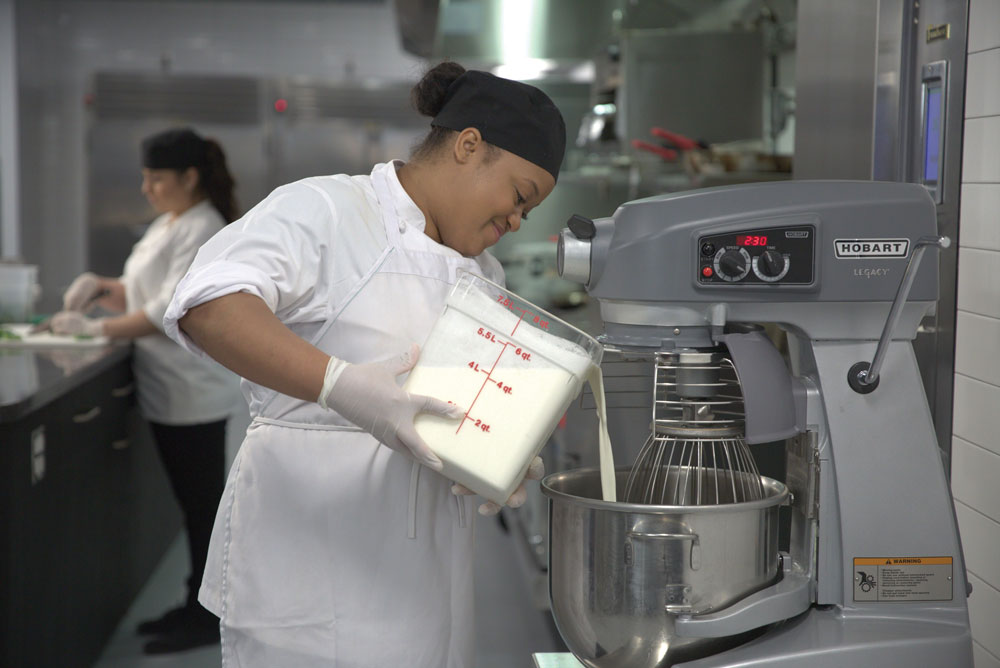
Weighing Your Options
Ashton G. Macauley, Vice President
Precision North America, Albany, NY
Your manufacturer can help you choose among different hooks—depending on dough recipe and preferences on mixing times—or supply different motors and transmissions to accommodate the proper rpms and gear reduction for certain batch times and dough consistencies.
Ask about support—whether the mixer goes down and needs to be fixed, or if you simply have a general cleaning, operating and preventative maintenance question. Are they available 24/7? Can you talk to a knowledgeable person who knows the machine inside and out? The manufacturer should also provide maximum info so the user can do his own preventative maintenance; that will save money and make sure everything is kept up properly over the long haul.
Tracy Morin is PMQ’s senior copy editor.
This article originally appeared in the May 2019 issue of PMQ Pizza Magazine and features input from the late Tom “The Dough Doctor” Lehmann.



